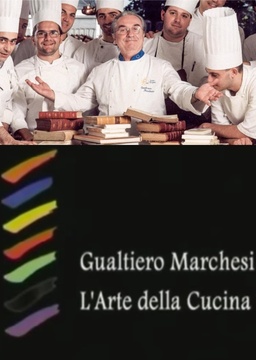















Difficulty:
 Adv-Intermediate
Adv-Intermediate
Italy
Find out what's so special about the restaurant where Anna and Marika are about to have lunch.
Difficulty:
 Adv-Intermediate
Adv-Intermediate
Italy
What did people eat in Ancient Rome? Paolo, the owner of the restaurant, tells us about the history of the place and talks about the most popular dishes on the menu based on actual recipes from Roman times.
Difficulty:
 Adv-Intermediate
Adv-Intermediate
Italy Lucano
Antonio tells us about the two islands off Calabria. The Isola di Dino is the larger of the two and he tells us the legend of how the island was named. Isola della Cirella is the other island.
Difficulty:
 Adv-Intermediate
Adv-Intermediate
Italy
Claudio Capotondi is a sculptor who lives and works in Pietrasanta, a Tuscan town famous for its marble and marble sculptors. He talks about an upcoming exhibition.
Difficulty:
 Adv-Intermediate
Adv-Intermediate
Italy
Claudio Capotondi, sculptor, takes us into his "thinking room" and talks about the process of taking a block of marble and turning it into a work of art.
Difficulty:
 Adv-Intermediate
Adv-Intermediate
Italy
The artist takes to the fascinating world of the marble quarries where he chooses the blocks of marble which he will transform into works of art.
Difficulty:
 Adv-Intermediate
Adv-Intermediate
Italy
Claudio Capotondo talks about the tools and techniques that enable him to transform a block of marble or porphyry (a kind of igneous rock) into a work of art.
Difficulty:
 Adv-Intermediate
Adv-Intermediate
Italy
"Innercore" is the title, inspired by an article in the New York Times, of Claudio Capotondi's masterpiece. He talks about the significance of the sculpture, and about the special kind of stone he used to make it.
Difficulty:
 Adv-Intermediate
Adv-Intermediate
Italy
Claudio Capotondi discusses his marble and travertine sculpture entitled PortaRoma, created in 2000.
Difficulty:
 Adv-Intermediate
Adv-Intermediate
Italy Sicilian
Giuseppe Pitrè was an ethnologist who collected documents pertaining to Sicily and its culture and traditions. His work is the basis for this documentary, which unites live footage, drawings, and archival documents.
Difficulty:
 Adv-Intermediate
Adv-Intermediate
Italy Sicilian
We learn about Pitrè's life, and his relationship to the sea.
Difficulty:
 Adv-Intermediate
Adv-Intermediate
Italy Sicilian
In this segment, we see some swordfish harpoon fishing, and hear an old Sicilian legend about a boy named Nicola who could stay underwater for a very long time.
Difficulty:
 Adv-Intermediate
Adv-Intermediate
Italy Sicilian
Pitrè's life was marked by a sort of travelling storyteller tradition in his family. In those days, a cuntastorie (storyteller) would go around to all the piazzas and tell stories, and people would pay to hear them.
Difficulty:
 Adv-Intermediate
Adv-Intermediate
Italy Sicilian
This segment focuses on an actor who retells and acts out stories from Sicily's past, speaking in Sicilian dialect. He uses the Pitrè Museum as a source for material. The museum houses a manuscript with over 4,000 Sicilian proverbs, just one of the many volumes of Sicilian ethnographic material.
Difficulty:
 Adv-Intermediate
Adv-Intermediate
Italy Sicilian
Pitrè's mission was to conserve and safeguard the traditions of his people, the Sicilians, and to keep the roots alive. Looking at religious traditions is one important way to do this.
Difficulty:
 Adv-Intermediate
Adv-Intermediate
Italy Sicilian
Saint Rosalia (1130–1166), recognized by her crown of roses, is Palermo's patron saint. The video shows the July 14 parade in honor of the saint, and a young man who credits his cure from a grave illness to Saint Rosalia.
Difficulty:
 Adv-Intermediate
Adv-Intermediate
Italy Sicilian
The segment concentrates on the richness of the Sicilian dialect, a dialect which is less and less spoken. The narrator interviews two poets who recite their works in Sicilian, providing insights into the language.
Difficulty:
 Adv-Intermediate
Adv-Intermediate
Italy Sicilian
Giuseppe Pitrè received his degree in medicine in 1865. His patients, among Palermo's poorest, provided him with a wealth of ethnographic material.
Difficulty:
 Adv-Intermediate
Adv-Intermediate
Italy Sicilian
A woman performs a traditional Sicilian ritual involving the sticking of pins into an onion, accompanied by prayers, in order to bring back the boyfriend of her suppliant.
Difficulty:
 Adv-Intermediate
Adv-Intermediate
Italy Sicilian
Giuseppe Pitrè loved attending performances of chivalric folk plays in Palermo. This segment follows a marionette player at Palermo's Opera dei Pupi, the same theater where Pitrè went to see folk epics.
Difficulty:
 Adv-Intermediate
Adv-Intermediate
Italy Sicilian
Palermo faces the sea and has a very long history of immigration. The narrator interviews a young woman whose great grandfather came to Sicily from Sudan. She is involved in educating immigrants from Africa and Asia. Pitrè was also highly involved in education.
Difficulty:
 Adv-Intermediate
Adv-Intermediate
Italy Sicilian
A Palermo doctor is interviewed about his practice and the African and Southeast Asian immigrant patients that he treats.
Difficulty:
 Adv-Intermediate
Adv-Intermediate
Italy
A Palermo doctor discusses the Integration of immigrants in Sicily and highlights the successes in healthcare. Medical assistance is provided for all immigrants, whether lawful or not.
Difficulty:
 Adv-Intermediate
Adv-Intermediate
Italy
The documentary comes to a close with an interview regarding a prison cell used during the Inquisition. The cell bears the graffiti of its inmates. Pitrè had laboriously uncovered the graffiti, but it was only rediscovered in the 1970s by the writer Leonardo Sciascia and the interviewee in this segment, Giuseppe Quatriglio, who used Pitrè's writing to find it.
Are you sure you want to delete this comment? You will not be able to recover it.